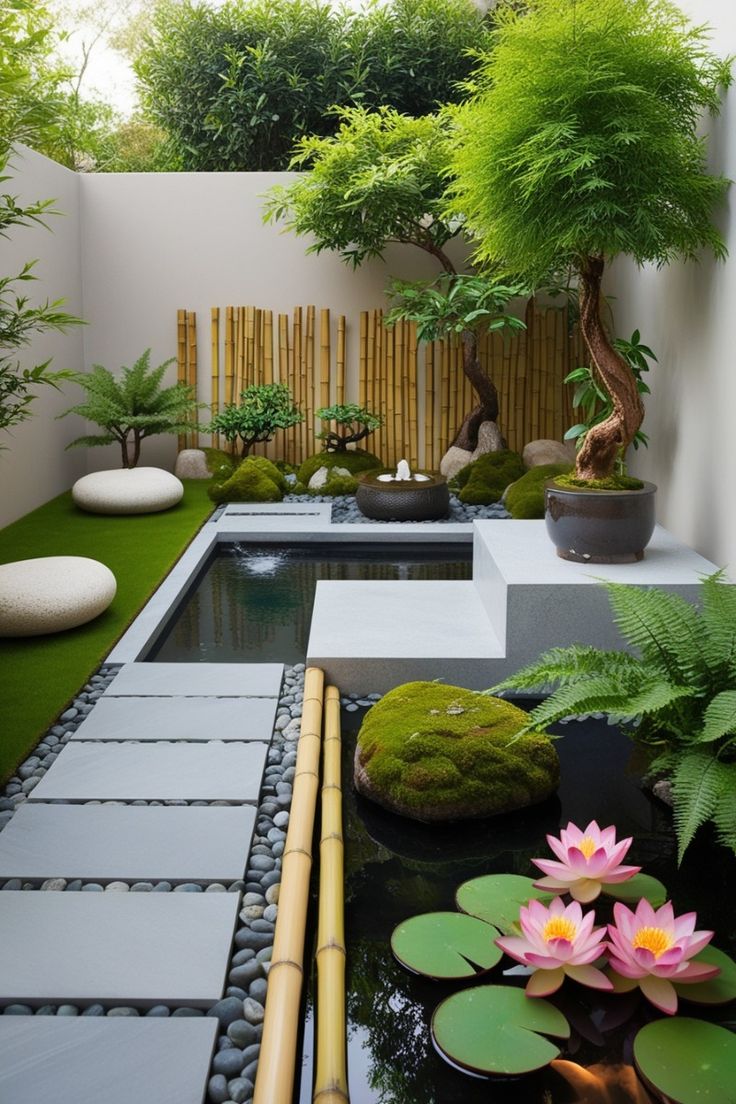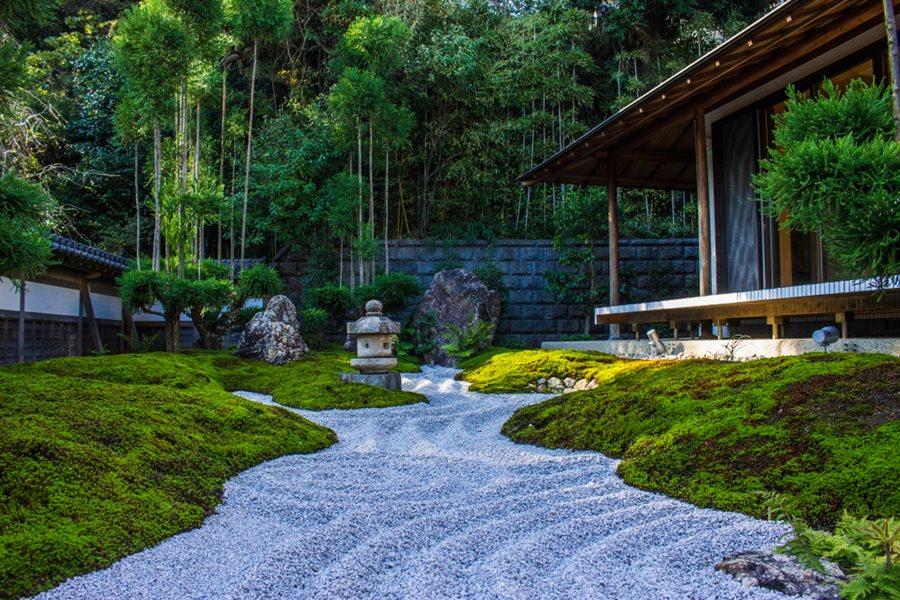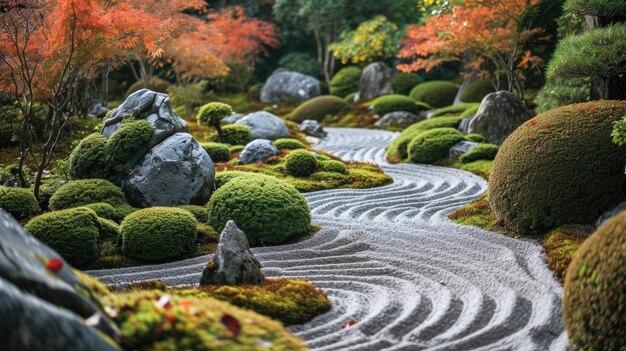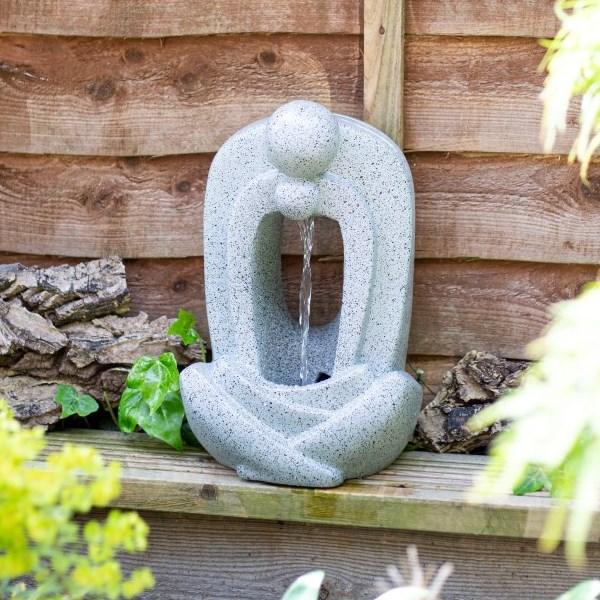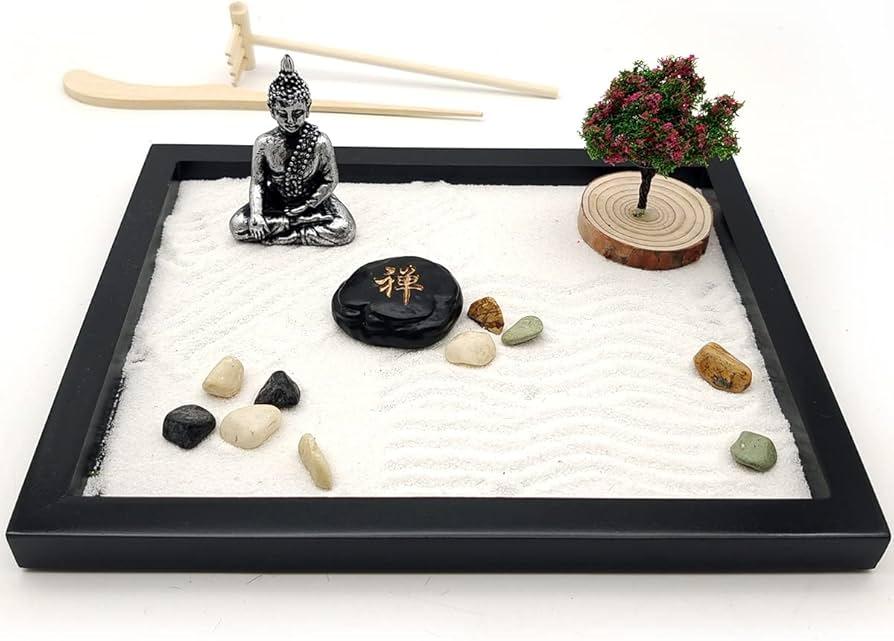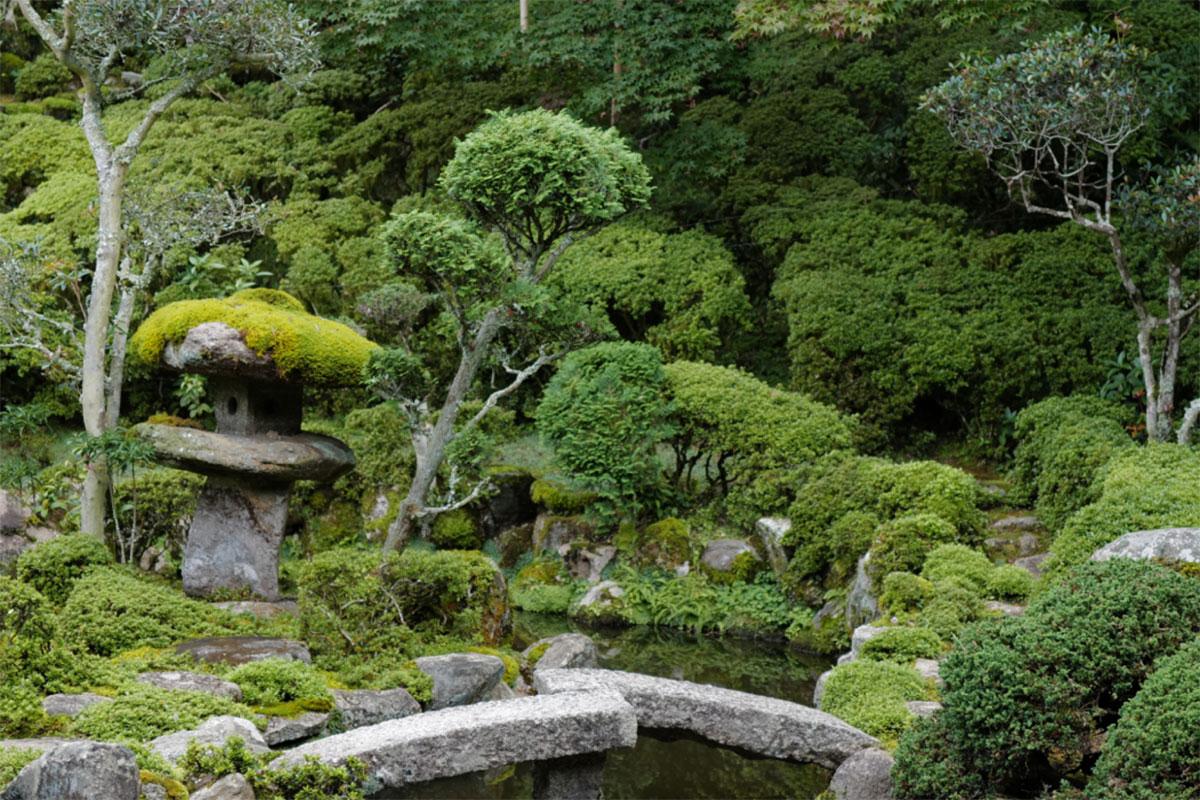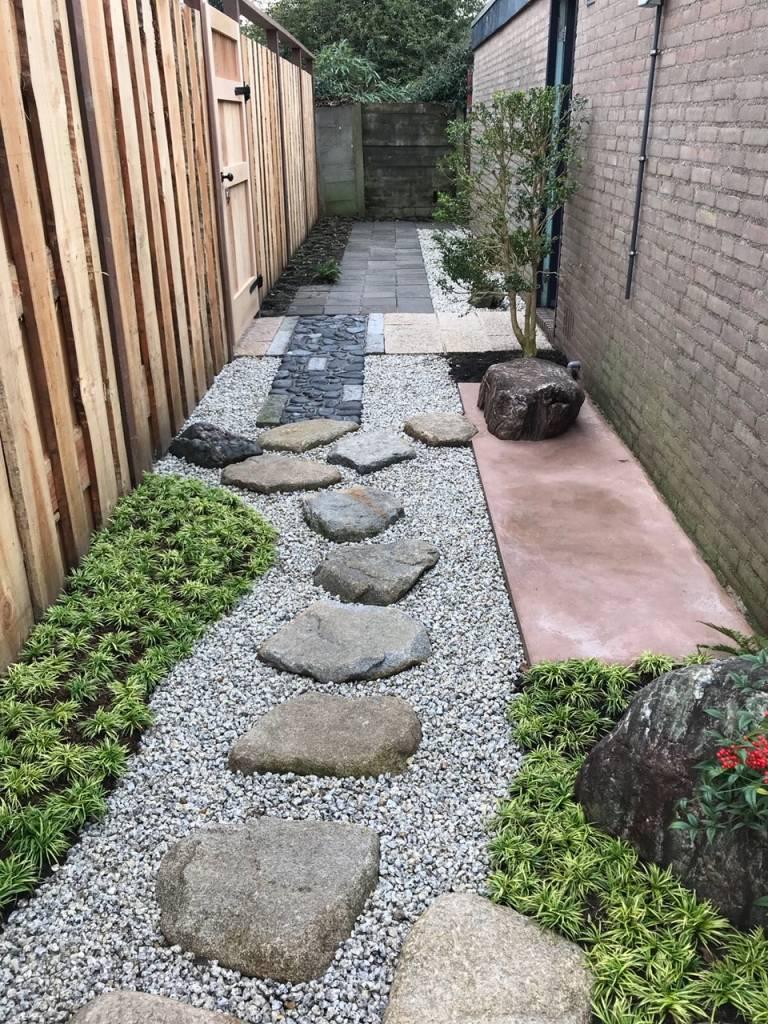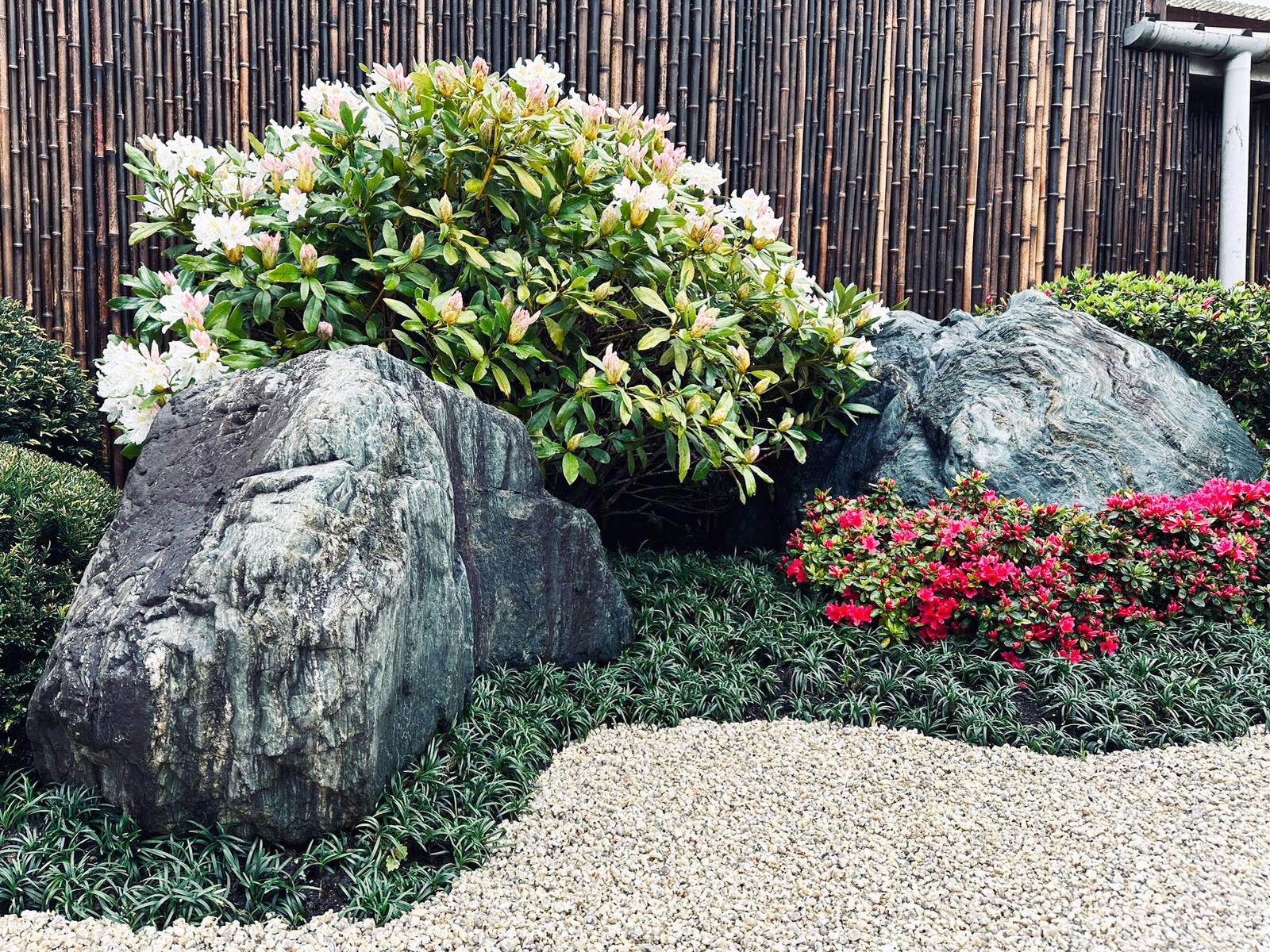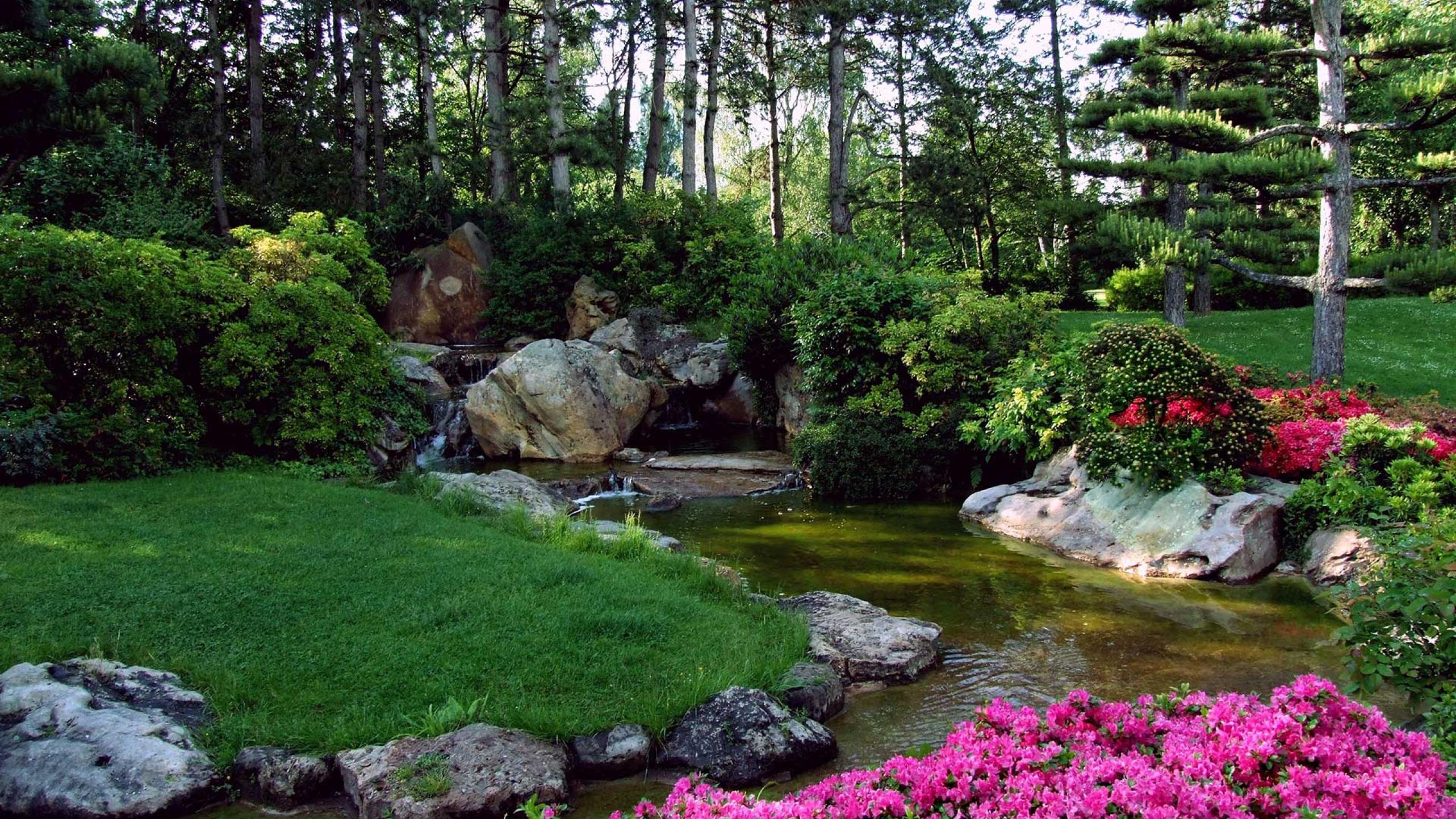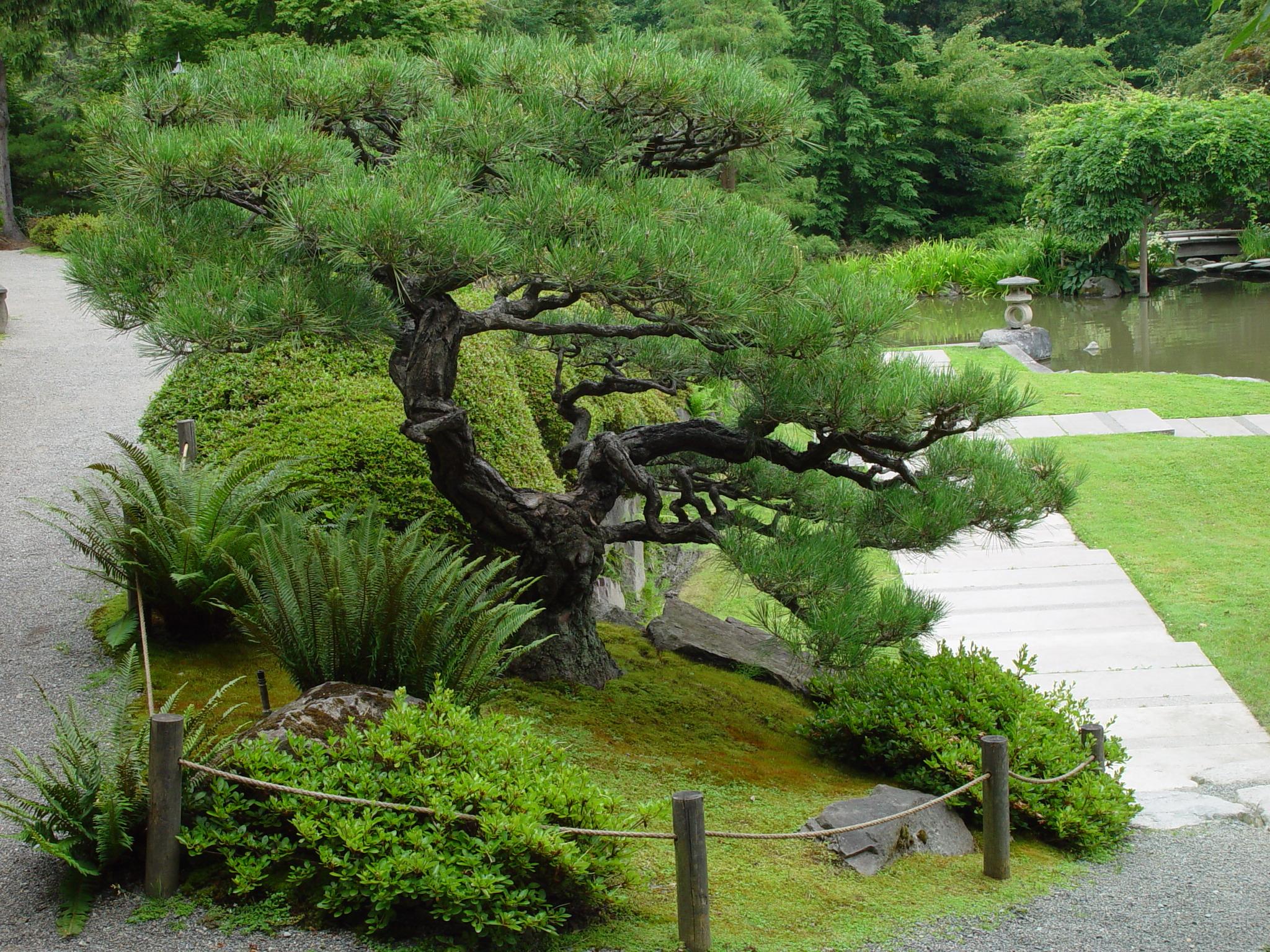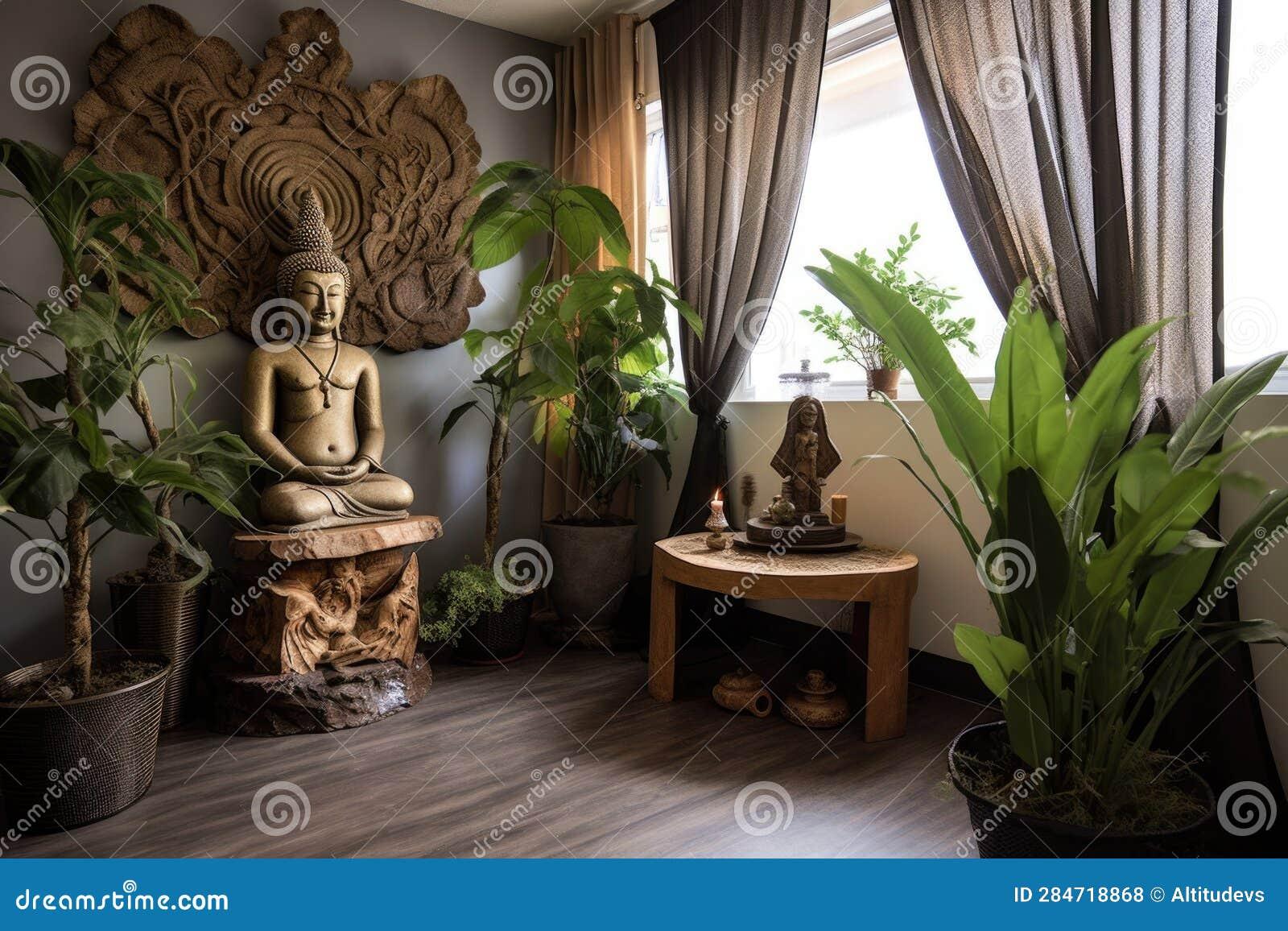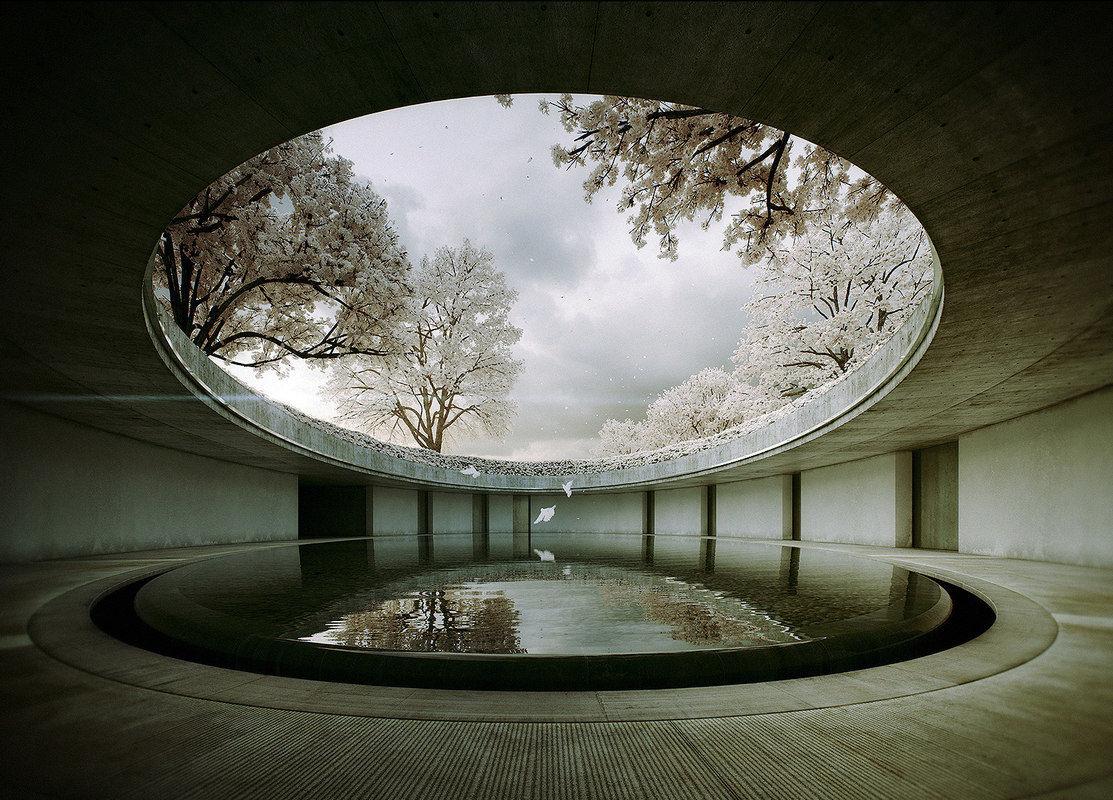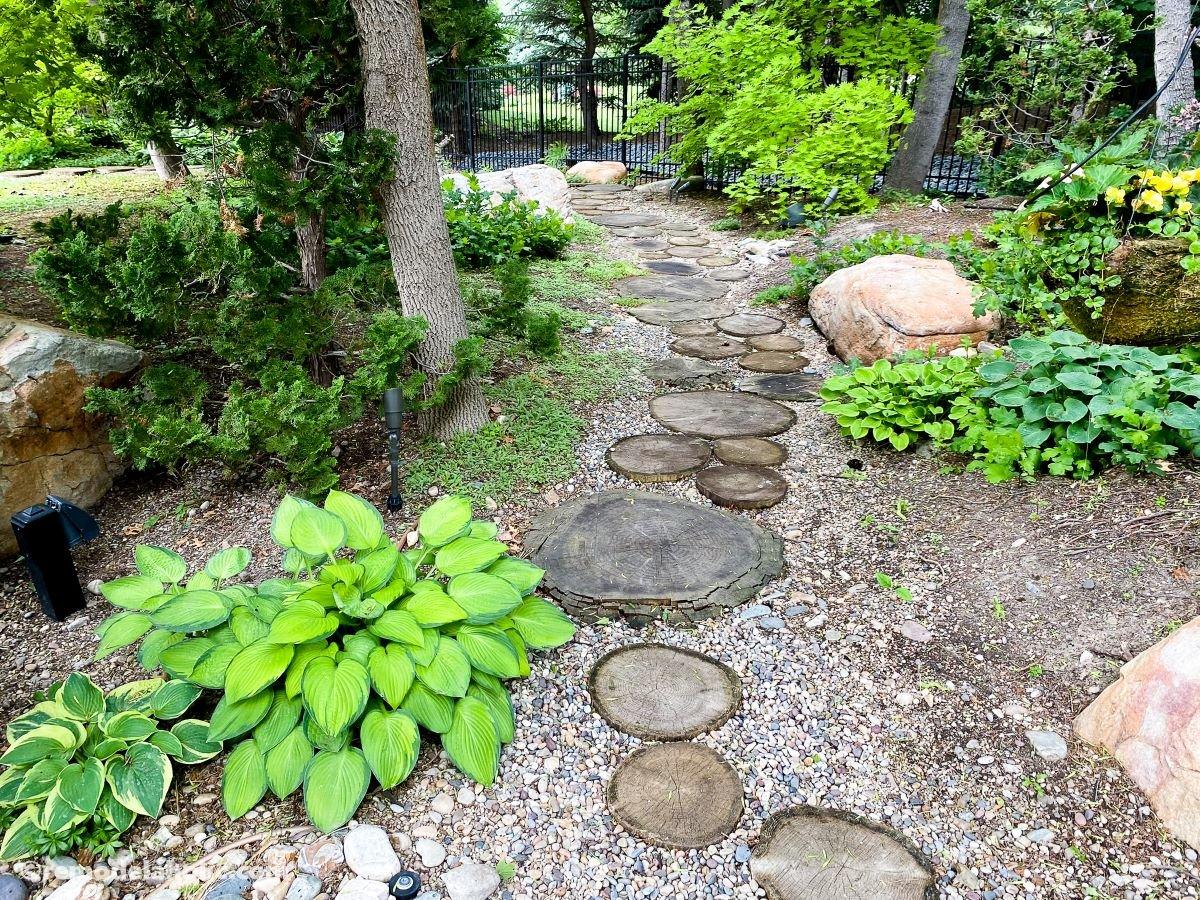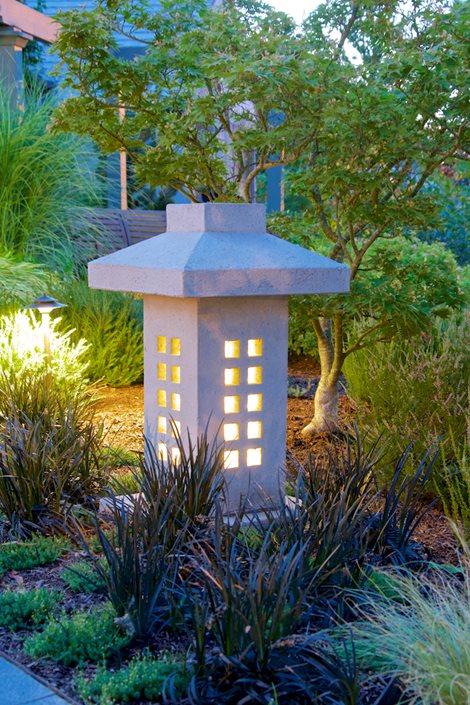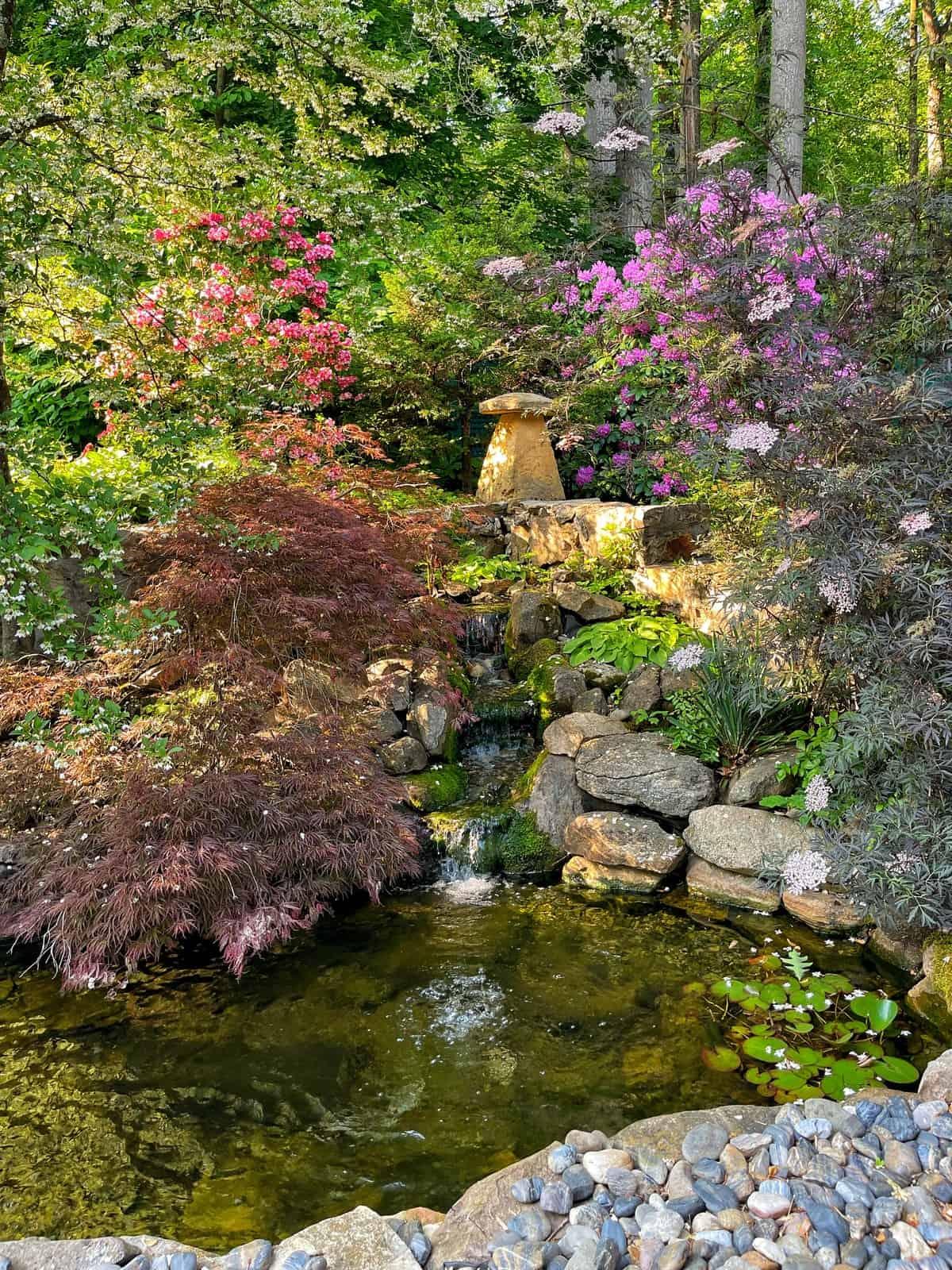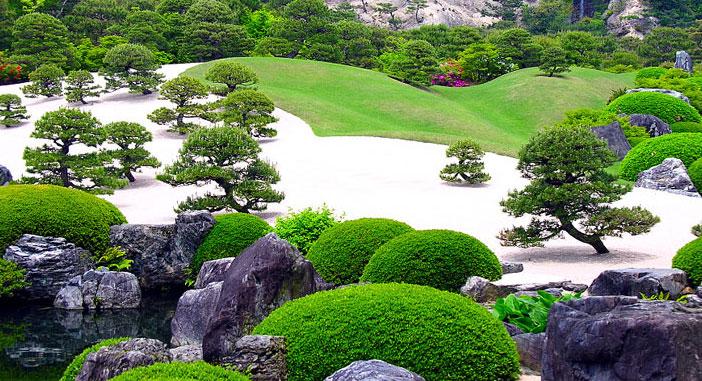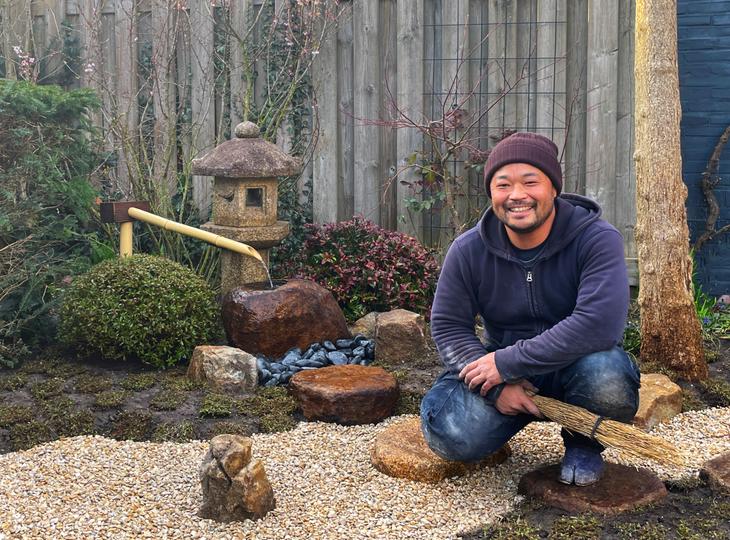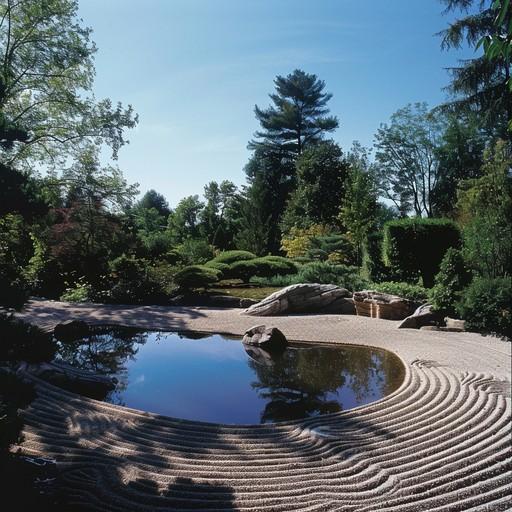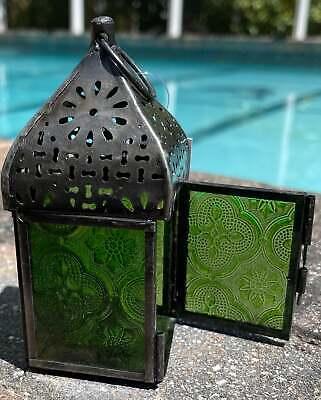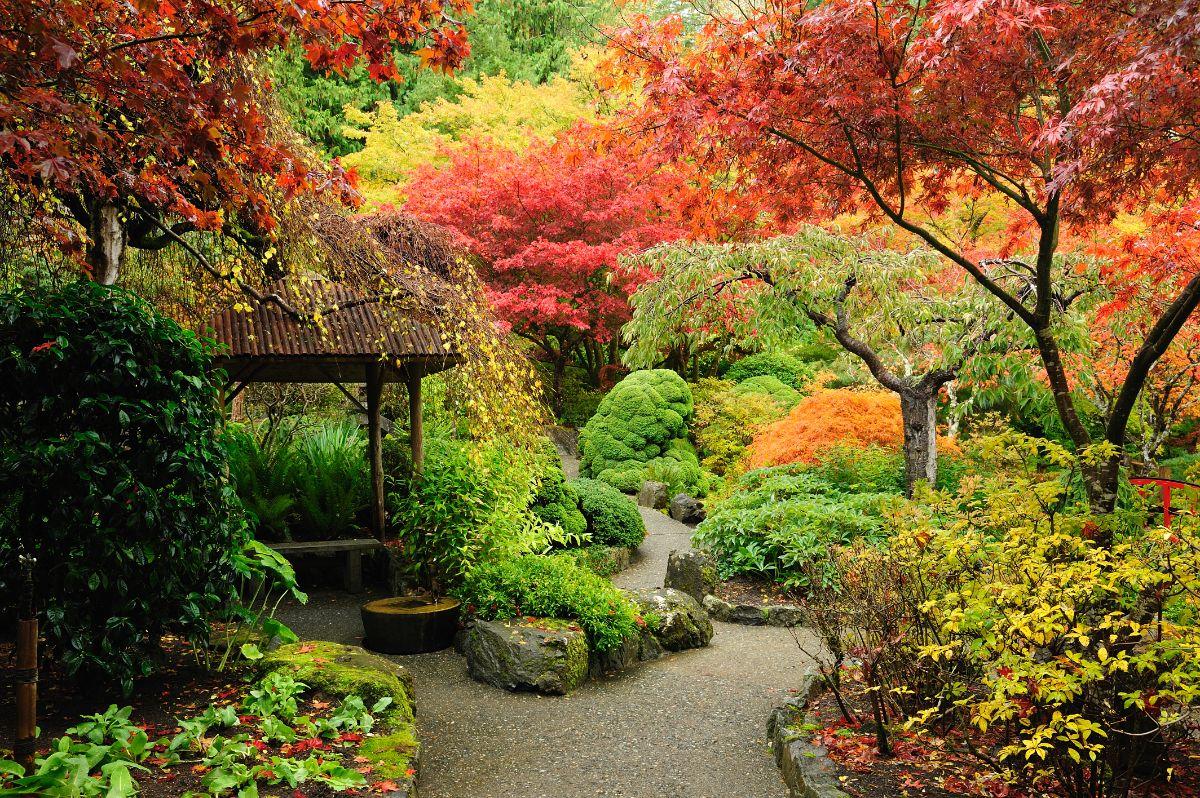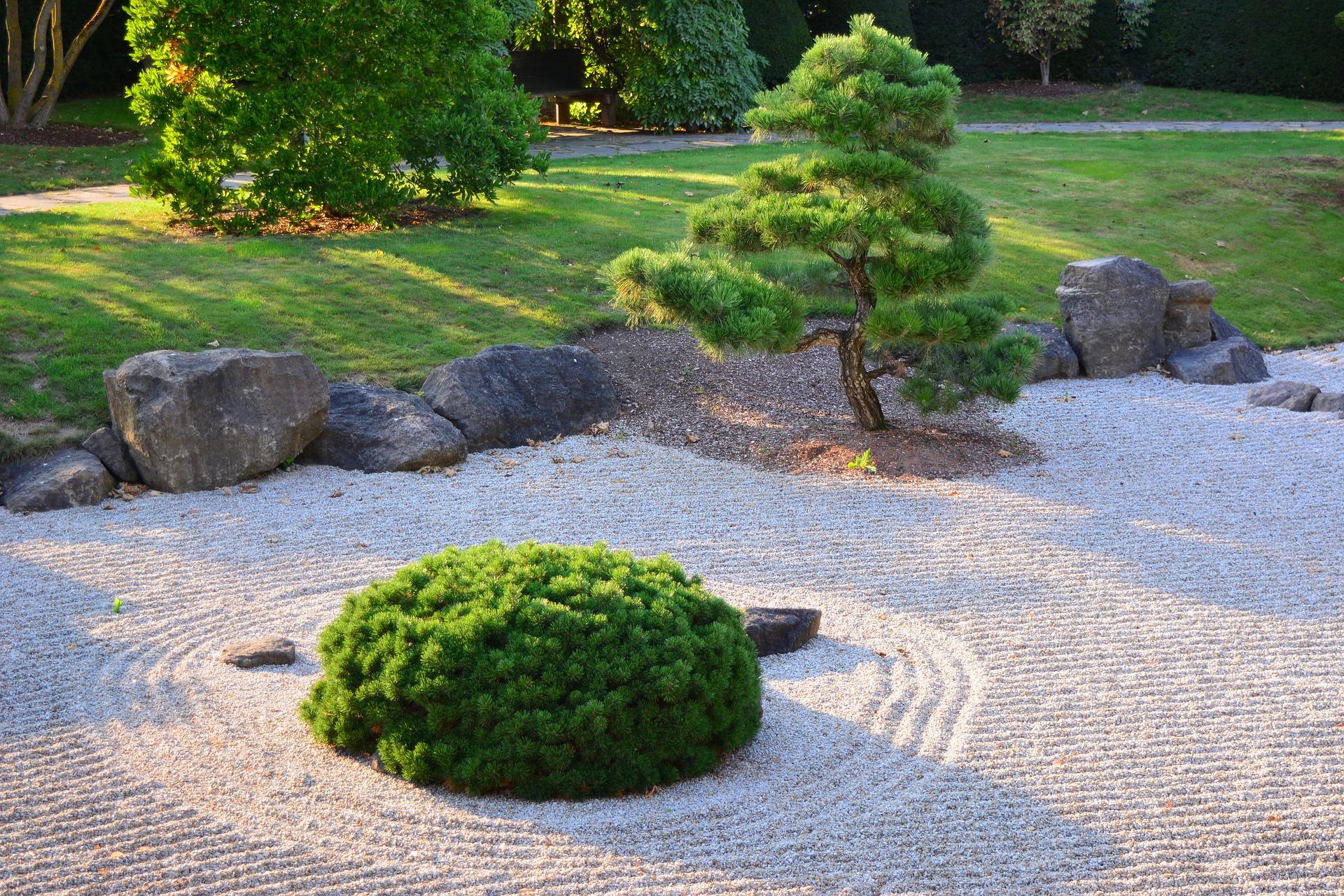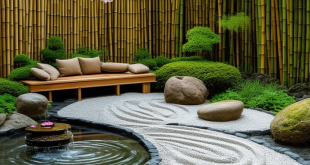In a fast-paced world filled with chaos and constant noise, the idea of a personal sanctuary where one can retreat, reflect, and recharge is more appealing than ever. Enter the Zen garden—a harmonious space that balances nature, simplicity, and mindfulness. Whether you’re looking to create a pocket of peace in your backyard, a serene balcony oasis, or simply want to learn more about this tranquil tradition, you’ve come to the right place.
In this listicle, we’ll explore 24 carefully curated elements that shape the essence of a Zen garden. Each item—from carefully chosen stones and soothing water features to introspective design principles and native plants—will guide you in designing a space that resonates with calmness and clarity. You’ll not only discover the aesthetic components but also gain insight into the symbolic meanings behind them, allowing you to infuse your garden with personal significance.
Get ready to embark on a journey towards tranquility as we unveil these 24 essential elements, each contributing to an environment where you can experience the true essence of Zen.
Embrace simplicity: Keep your Zen Garden design clean and uncluttered
Creating a Zen Garden revolves around the principle of simplicity. Decluttered spaces allow the mind to wander effortlessly, fostering a deeper state of tranquility. To achieve this, start by selecting a few key elements that resonate with you. Rather than overcrowding your garden with too many decorative pieces, focus on natural textures and a limited color palette. Use soft, muted tones that blend with the surrounding nature, which will help create a serene atmosphere. Achieve balance by incorporating large stones or simple wooden structures as anchors, while leaving ample open space for meditation and reflection.
In your design, consider using symmetry and repetition as guiding principles. Arrange sand, gravel, or pebbles in gentle, flowing patterns that mimic natural landscapes, while limiting the number of distractions. This approach emphasizes calm and unity, inviting rejuvenation into your life. You may also want to include a small table or bench, providing a dedicated area for contemplation or peaceful moments with a good book. Remember, the goal is to cultivate a peaceful sanctuary; every element should serve a purpose and contribute to an overall sense of harmony. For more inspiration, visit gardendesign.com to explore traditional Zen Garden designs and ideas.
Choose calming colors: Soft pastels and earth tones enhance tranquility in your Zen Garden
Creating a tranquil space in your Zen Garden begins with the right palette. Soft pastels like lavender, mint green, blush pink, and sky blue evoke feelings of peace and serenity, encouraging relaxation and mindfulness. When these gentle hues are interspersed with earth tones such as sandy beige, muted brown, and mossy green, they harmonize beautifully to reflect the natural world. These calming colors not only serve as a backdrop for your garden but also enhance the overall atmosphere, making it a perfect setting for meditation and reflection.
To maximize the tranquility in your garden, consider how these colors will interact with your chosen elements. For instance, you might incorporate pastel-hued stones or earth-toned planters. Here’s a simple overview of calming color combinations that work particularly well in a Zen Garden:
| Color | Effect |
|---|---|
| Lavender | Promotes calmness |
| Soft Green | Enhances connection to nature |
| Earthy Brown | Creates a grounding effect |
| Misty Blue | Encourages clarity and tranquility |
Incorporating these shades into your design allows each element in your garden to resonate with a sense of peace. Paint walls and fences in muted tones, select soft-colored gravel or sand, and use planters that blend seamlessly into this serene palette. By choosing calming colors, you not only enhance the beauty of your Zen Garden but also foster a peaceful mindset that can be nurtured over time. For more inspiration on color selections, visit The Spruce.
Incorporate water features: Flowing water creates a soothing ambiance in your Zen Garden
Incorporating flowing water into your Zen Garden can transform it into a sanctuary of serenity. The gentle sound of a stream or pond can drown out noise and promote relaxation, making it a perfect place for meditation or reflection. Consider adding elements such as:
- Streams: Create meandering pathways for water to flow, mimicking the natural movement of a river.
- Ponds: A still body of water fosters stillness in the mind, inviting moments of quiet contemplation.
- Waterfalls: The sight and sound of water cascading down rocks can evoke a sense of peace and tranquility.
- Fountains: These can be designed to create a harmonious merging of sound and beauty, acting as a focal point in your garden.
To enhance the visual aesthetics of your water features, consider surrounding them with native aquatic plants and smooth stones that reflect the colors of the water. Such natural accents not only add beauty but also support local biodiversity. A beautifully arranged water element captivates the eye and invites reflection. For a comprehensive guide to designing water features, check out resources on The Spruce.
Select natural materials: Wood, stone, and gravel harmonize beautifully in your Zen Garden
Your Zen garden comes alive when you embrace the organic beauty of wood, stone, and gravel. Each element plays a vital role in creating a serene atmosphere, while ensuring a connection to nature. Incorporating wood—whether through benches, pathways, or subtle borders—adds warmth and a rustic charm. Look for naturally fallen branches, boulders, or driftwood to emphasize that elusive, natural quality. Don’t shy away from using different types of wood, as they can contribute texture and visual contrast to your space. Sourcing sustainable wood not only reflects your commitment to nature but also enhances the overall ethos of the Zen garden.
Stones and gravel form the backbone of any tranquil garden space, offering structure and grounding amidst the fluidity of other elements. Stone, whether it’s smooth river rocks or rough-cut flagstones, introduces a sense of permanence and stability. You can create calming pathways or focal points that draw the eye through your garden using various stone sizes and shapes. Gravel, on the other hand, is incredibly versatile—a blank canvas beneath your feet that can evoke the sound of gentle rain when walked upon. Consider using different gravels to define spaces or surround plants, enhancing both aesthetics and functionality. For inspiration on selecting the right natural materials for your garden, check out Gardenista.
Plant thoughtfully: Use native plants for easy maintenance in your Zen Garden
Creating a serene atmosphere in your Zen garden can be achieved effortlessly by incorporating native plants that thrive in your local climate. These plants not only promote biodiversity but also require less water and maintenance compared to exotic alternatives. Consider choosing drought-resistant succulents, hardy wildflowers, and grasses that are adapted to the soil conditions in your area. This selection not only enhances the aesthetic appeal but also creates a sense of harmony with the local ecosystem. Here are some suitable choices to consider:
- Echinacea – Known for its beautiful blooms and resilience.
- Lavender – Offers soothing fragrance and attracts pollinators.
- Blue Grama Grass – Adds texture and movement to your garden.
When selecting your plants, it’s wise to investigate which species are indigenous to your region. This expertise will guide you in fostering growth that requires minimal intervention. A well-planned arrangement can create layers of sight and sound, drawing visitors into a cocoon of tranquility. You can find reliable resources for discovering local native plants on wildflower.org. Here’s a simple table to help you track down potential candidates for your tranquil retreat:
| Plant Name | Sunlight Needs | Height (ft) |
|---|---|---|
| Echinacea | Full sun | 2-5 |
| Lavender | Full sun | 2-3 |
| Blue Grama Grass | Full sun | 1-2 |
Create pathways: Gravel or stepping stones guide you through your Zen Gardens serenity
In a Zen garden, the journey is as significant as the destination, and creating clear pathways can profoundly enhance the overall atmosphere of tranquility. Gravel paths can lead the way through your space, allowing for soft crunching sounds underfoot that echo the calmness of nature, while stepping stones provide a more deliberate journey, directing your footsteps intentionally. When designing these pathways, consider alternating materials—light-colored gravel paired with smooth, dark stepping stones can create a stunning visual contrast that invites exploration. Each step becomes a meditative moment, guiding you deeper into the serenity of your garden.
To ensure that your pathways harmonize with the surrounding elements, consider the following design suggestions:
- Size and Scale: Choose stones or gravel that are proportional to the dimensions of your garden.
- Naturalistic Shapes: Use curves rather than straight lines to mimic natural pathways found in nature.
- Surrounding Flora: Integrate low-growing plants along the edges for added softness and color.
- Textures: Combine the roughness of gravel with the sleekness of stone for a rich tactile experience.
To visualize these ideas, the table below illustrates different materials for pathway construction:
| Material | Benefits | Considerations |
|---|---|---|
| Gravel | Easy to maintain, natural drainage | Can shift over time, may need replenishing |
| Stepping Stones | Stable, attractive design element | Installation can be labor-intensive |
| Wood Chips | Soft underfoot, biodegradable | May require frequent topping up |
| Bricks | Durable and structured | Can get hot in the sun, may need leveling |
Incorporating these pathways into your Zen garden allows the space to feel not just like a visual retreat, but an immersive sensory experience. For more ideas on creating harmonious outdoor spaces, check out Garden Design.
Add a focal point: Statues or unique rocks draw the eye in your Zen Garden
Incorporating statues or uniquely shaped rocks into your Zen garden can transform an ordinary space into an extraordinary retreat for the mind and spirit. These elements serve as focal points, drawing the eye and inviting contemplation. When selecting statues, consider options that resonate with you, such as Buddhas, Koi fish, or Torii gates. Each piece not only enhances the visual narrative of the garden but also represents deeper meanings of peace, resilience, and harmony. Unique rocks, whether they are naturally occurring or artistically crafted, add texture and contrast to the soothing sand or gravel, offering a perfect balance between man-made and natural beauty.
When strategically placed, these focal points guide the movement through your garden space, encouraging mindfulness and reflection. Here are a few imaginative suggestions to breathe life into your Zen garden:
- Minimalist Statues: Choose serene figures that evoke tranquility, like a meditating monk or a graceful crane.
- Textured Stones: Incorporate smooth pebbles alongside jagged, weathered rocks for a dynamic surface.
- Water Features: Add small basins or fountains alongside your statue; the sound of water can enhance the calming atmosphere.
| Focal Point | Description |
|---|---|
| Stone Lantern | A classic addition that illuminates the garden at night, symbolizing guidance. |
| Driftwood Sculpture | An organic piece that blends beautifully with the natural environment. |
| Zen Circle Rock | A circular stone that encourages meditation and mindfulness. |
To further explore inspirational ideas for selecting the perfect focal points, visit The Spruce, a great resource for garden enthusiasts seeking to elevate their outdoor spaces.
Utilize balance: Symmetrical designs foster harmony within your Zen Garden environment
In the art of designing a Zen Garden, achieving a sense of equilibrium is essential to cultivate a serene atmosphere. Symmetrical designs inherently resonate with the principles of balance and harmony, creating a visual path for relaxation. When planning your garden layout, consider mirroring elements on either side of your central pathway. Use sleek lines, natural shapes, and strategically placed objects to reinforce this balance. For example, pairing symmetrical features such as two identical stone lanterns can guide the eye across the garden while providing a sense of peaceful order.
A well-planned layout not only offers aesthetic beauty but also encourages mindfulness and reflection. Pay attention to the following elements when crafting your design:
- Paths: Design pathways that are identical in width and materials.
- Planting: Choose plants that can be mirrored on both sides, such as Japanese maples or bamboo.
- Water Features: Incorporate a central water element flanked by smaller stones or plants.
- Seating Areas: Create two seating areas that balance each other within the space.
Utilizing symmetry not only enhances the visual appeal but also evokes a deeper emotional response, making the garden a true sanctuary for relaxation and contemplation. For further inspiration on creating harmonious living spaces, explore resources like Architectural Digest for unique designs and concepts.
Create shaded areas: Trees or canopies offer respite from the sun in your Zen Garden
Incorporating shade into your Zen garden transforms it into an oasis of calm, offering both visual appeal and a refuge from the harsh sun. Trees, with their graceful canopies, not only enhance the aesthetic but also provide a cooling shelter. Select species that complement your garden’s theme, such as a delicate Japanese Maple or a strong, stalwart Bamboo. They create a balance, inviting you to pause and experience nature in its serene form. Additionally, you might consider canopies or pergolas, draped with climbing plants, which can offer a unique blend of shelter and style. This allows for cozy seating areas where one can meditate and reflect, enveloped by nature’s embrace.
When deciding on your shade elements, consider the following features:
- Dappled light: Create enchanting patterns of light and shadow with trees that have a fine-leaved texture.
- Seasonal variety: Opt for trees or canopies that change with the seasons, bringing vibrant colors in the fall and lush greenery in the summer.
- Sensory appeal: Incorporate fragrant flowering plants at the base of your trees to heighten the experience of your shaded areas.
To illustrate the ideal trees for your garden, here’s a quick overview:
| Tree Type | Benefits | Height |
|---|---|---|
| Japanese Maple | Beautiful foliage, graceful branches | Varies (typically 10-25 ft) |
| Bamboo | Fast-growing, creates a serene sound | Varies (backyard types: 6-15 ft) |
| Cherry Blossom | Stunning seasonal blooms | 20-30 ft |
For more ideas on creating a peaceful outdoor space, check out japanesegardening.org, where you’ll find inspiration and insights curated for garden enthusiasts.
Use sand: Raked sand patterns symbolize waves and tranquility in your Zen Garden
Raked sand patterns in a Zen garden offer a simplistic yet profound way to evoke the essence of natural waves and serene waters. As you run your rake through the sand, crafting intricate designs that mimic the gentle ebb and flow of ocean waves, you create a visual representation of tranquility that can calm the mind and inspire meditation. The soft, rhythmic lines formed by the rake not only symbolize the movement of water but also remind us of the importance of mindfulness in our daily lives. Each stroke can be a meditative practice, encouraging you to focus on the present moment while your surroundings fade into quietude.
To enhance the calming effects of the raked sand, consider the following design tips: Choose a fine-grained sand for a more refined look, experiment with varying patterns—like circular ripples or straight lines—to find what resonates with you, and incorporate natural elements such as stones or small plants within the sand to create contrast and depth. Utilizing sand patterns effectively transforms your Zen garden into a tranquil haven that invites reflection and relaxation. For a deeper exploration of Zen gardens and their symbolic elements, visit japaneserockgardens.com.
Design for meditation: Create quiet corners inviting reflection in your Zen Garden
In your quest to cultivate serenity, consider incorporating quiet corners within your Zen Garden that beckon you to pause and reflect. These intimate spaces can be transformed with soft, natural materials, allowing visitors to feel embraced by tranquility. Adding elements such as comfortable seating, aromatic plants, and gently flowing water can create an inviting atmosphere, encouraging moments of peace from the outside world. Imagine a simple bamboo bench nestled among pebbles, or a cozy nook shaded by lush greenery, where solitude and introspection can flourish.
To enhance the meditative quality of these spaces, you might explore the benefits of lighting. Soft, solar-powered lanterns or subtle garden lights can illuminate pathways and corners, contributing to an overall ambiance of calmness. Consider setting up small altars that reflect your personal journey—perhaps adorned with smooth stones, small statues, and candles to symbolize mindfulness and intention. Such touches can transform a quiet corner into a personal sanctuary. For additional inspiration on cultivating meditation areas outdoors, visit Gardenista.
Integrate art: Sculptures and installations can enhance the spirit of your Zen Garden
Incorporating sculptures and installations into your Zen garden not only adds visual appeal but also cultivates a deeper sense of peace and contemplation. Consider minimalist sculptures that resonate with nature, such as stone figures or abstract forms made of weather-resistant materials. These pieces can serve as focal points, drawing the eye and inviting stillness. Choose sculptures that reflect your personal aesthetic while harmonizing with the garden’s natural elements. The presence of water features, like a small fountain or a carefully placed stone basin, can also enhance your garden’s serenity, creating gentle sounds that further promote relaxation.
When selecting installations, think about natural materials like bamboo or driftwood, which add an organic touch to the environment. Artistic trellises adorned with climbing plants can serve as beautiful backdrops, blending art with nature. Additionally, consider Zen-inspired installations such as stone pathways, which encourage mindful walking and meditation. To enrich your garden’s atmosphere, you might even integrate lighting that highlights specific sculptures during the evening. This combination of art and nature not only beautifies your space but also inspires a tranquil state of mind. Explore more on how to incorporate these elements effectively at mississippimarketplace.com.
Focus on textures: Combine smooth stones with rough wood for visual interest in your Zen Garden
When crafting your Zen garden, the interplay of different textures can create a stunning visual tapestry that enhances tranquility. Smooth stones evoke a sense of calmness, their rounded shapes and polished surfaces inviting touch and reflection. In contrast, rough wood—with its rugged bark and weathered edges—adds a tactile element that speaks to nature’s resilience. By strategically placing these contrasting materials, you can create focal points that draw the eye while encouraging a meditative state. Consider arranging smooth pebbles in a swirling pattern to mimic the flow of water, surrounded by chunks of driftwood or bark that evoke the earthy essence of a natural landscape.
Integrating these textures is not merely about aesthetics; it’s about the emotional journey they facilitate. When designing your layout, think about layering and placement. You may want to use sharp contrasts—such as a cluster of sleek granite stones set against the ruggedness of reclaimed timber—to provoke thought and introspection. Additionally, including sand or gravel can create a harmonious transition between textures, while also serving a practical purpose in your garden design. Explore these combinations for a truly immersive experience, and for further inspiration, visit zen-garden.com.
Keep it eco-friendly: Choose sustainable practices while designing your Zen Garden
When designing your Zen garden, incorporating sustainable practices enhances not only the tranquility of your space but also the wellbeing of our planet. Start by choosing native plants that thrive in your area’s climate. They require less water and maintenance, promoting a natural ecosystem. Additionally, consider implementing rainwater harvesting systems to collect and utilize rainwater for irrigation, which conserves resources and supports sustainable gardening. You can also opt for recycled materials to construct pathways or decorative elements, reducing waste while maintaining aesthetic value.
Mindfully selecting your garden tools and supplies is equally important. Look for eco-friendly products that are biodegradable and free of harmful chemicals. This can include organic fertilizers or natural pest control methods that do not disrupt local wildlife. To enhance sustainability, build a compost bin using materials you already have to recycle garden waste back into your soil. remember to keep your design as low maintenance as possible, promoting biodiversity in your garden without excessive intervention. For more eco-friendly gardening tips, visit treehugger.com.
Encourage wildlife: Birdbaths and pollinator plants attract life to your Zen Garden
Incorporating elements that attract wildlife can elevate the tranquility of your garden to new heights. A birdbath not only serves as a refreshing drink and bathing spot for our feathered friends but also adds a serene focal point to your landscape. Consider using natural materials such as stone or ceramic to blend seamlessly with your surroundings. Position the birdbath in a location where it’s easily visible, allowing you to enjoy the delightful spectacle of birds flocking to it throughout the day. Additionally, the sound of water gently splashing can create a peaceful, ambient noise that complements the holistic atmosphere of your Zen space.
Add to this wildlife-friendly environment by including pollinator plants. Selecting a variety of native flowers can create a beautiful and inviting habitat for bees, butterflies, and hummingbirds. Here’s a brief table showcasing some popular pollinator plants that thrive in diverse conditions:
| Plant Name | Attracts | Bloom Time |
|---|---|---|
| Lavender | Bees, Butterflies | Early Summer |
| Milkweed | Monarchs | Summer to Fall |
| Coneflower | Bees, Birds | Summer |
| Aster | Bees, Butterflies | Fall |
By thoughtfully selecting both the positioning of your birdbath and introducing a diverse array of pollinator plants, you are not only creating a nurturing habitat but also inviting movement, color, and life into your Zen garden. For more tips on creating a wildflower haven, explore resources at wildflower.org.
Incorporate seating: Benches or mats provide spaces for relaxation in your Zen Garden
Creating spots for comfort and contemplation within your Zen garden can transform a serene space into a sanctuary. You can choose from a variety of seating options to suit your style and the overall aesthetic of the garden. Benches, whether made of natural wood or stone, can offer a sturdy and inviting area for quiet reflection. Alternatively, mats made from bamboo or natural fibers provide a flexible seating arrangement, allowing you to adapt to different areas of your garden easily. Arranging these seating elements in strategic locations, such as near a water feature or surrounded by fragrant plants, can enhance the experience of relaxation and mindfulness.
Consider the following options when incorporating seating into your serene landscape:
- Wooden benches: Rustic charm that blends with nature.
- Stone seating: Durable and offers a grounding presence.
- Yoga mats: Perfect for meditation or gentle stretching.
- Bamboo cushions: Soft, portable seating enhancing comfort.
In your design, think about setting seating away from high-traffic areas to maintain tranquility. Combining seating with elements such as overhead pergolas or shade trees can protect you from harsh sunlight, creating an even more inviting atmosphere. Whether you’re meditating, practicing yoga, or simply enjoying the beauty around you, incorporating thoughtfully designed seating options will undoubtedly elevate the calming essence of your Zen garden. For more inspiration on outdoor seating ideas, visit houzz.com.
Experiment with scale: Vary the size of elements to create depth in your Zen Garden
One of the most captivating ways to enhance your Zen garden is by playing with the scale of various elements. By introducing large boulders juxtaposed with smaller pebbles, you can create a striking visual contrast that draws the eye and encourages contemplation. Consider incorporating miniature bonsai trees along with sprawling succulent arrangements. This thoughtful variation not only adds a sense of depth but also invites exploration as guests wander through your tranquil space. Layering is key; place larger rocks or plants towards the back and gradually decrease the size of elements as they move toward the front, enhancing your garden’s dimensionality.
Another technique to consider is the use of vertical spacing through the placement of taller features, such as bamboo stalks or decorative water features. These elements can act as focal points, naturally directing attention both upward and downward. Mixing in natural textures, like smooth stones or mossy patches, can further enrich the aesthetic, providing varied sensory experiences that embody the spirit of a Zen garden. To further guide your design choices, here’s a simple comparison chart outlining various scale elements and their intended impact:
| Element | Size | Intended Effect |
|---|---|---|
| Large Boulders | Large | Creates a sense of strength and stability |
| Bonsai Trees | Small | Invites intricate observation and admiration |
| Bamboo Stalks | Tall | Adds vertical interest and a calming sound when swaying |
| Smooth Stones | Varied | Enhances texture and provides a tactile experience |
By thoughtfully varying the sizes and textures of your garden’s elements, you can cultivate a layered environment that encourages relaxation and mindfulness. For more inspiration on integrating scale into your Zen garden, explore resources like Gardenia.
Mindful maintenance: Regular care keeps your Zen Garden calm and inviting
To cultivate the calming essence of your Zen garden, regular maintenance is essential. A well-tended landscape not only enhances its beauty but also fosters tranquility and mindfulness. Start by dedicating time each week to clear away fallen leaves and debris. This simple task helps maintain a serene environment, allowing the natural beauty of your garden to shine unobstructed. Consider incorporating rituals into your routine, such as raking the sand or rearranging stones, which can serve as a form of meditation, helping you to center your thoughts and reconnect with nature.
Another vital aspect of upkeep is plant care. Assess the health of your plants regularly and address any signs of distress, such as wilting or discoloration. Pruning overgrown foliage not only keeps the garden aesthetically pleasing but also promotes healthy growth, ensuring that each element contributes to the overall harmony of the space. Additionally, a quick check on the water drainage and soil quality is beneficial for the vitality of your flora. By fostering a nurturing relationship with your garden, you create a sustainment loop that feeds into its peaceful ambiance, making it an inviting escape from daily life. For more tips on garden upkeep, visit gardeningknowhow.com.
Personalize your space: Infuse your personality into your Zen Garden for true reflection
Incorporating unique elements into your Zen Garden not only enhances its beauty but also allows for a deeper connection to your personal journey. Begin by choosing natural stones that resonate with you — consider using different shapes and colors to reflect different aspects of your personality. Try arranging them in a way that creates a harmonious flow, mirroring how you feel at peace. You might also want to add whimsical ornaments or personal symbols, such as your favorite animal figures or meaningful artifacts that ignite fond memories. These personal touches serve as constant reminders of what brings you joy and tranquility.
To further personalize your garden, think about integrating plant life that holds significance for you. Whether it’s your favorite flower or a plant with specific medicinal properties, every plant can bring a unique energy to the space. You may also want to consider seasonal decorations; for instance, using autumn leaves for a touch of nostalgia or spring blossoms for a representation of renewal. Don’t shy away from showcasing your artistic side with hand-painted stones or small water features that embody your artistic vision. Celebrate your individuality by creating a space that genuinely reflects who you are and what brings you peace. For additional inspiration, explore websites like bhg.com for creative ideas on personalizing outdoor spaces.
Reflect on purpose: Contemplate what tranquility means to you in your Zen Garden
Creating your Zen garden isn’t merely about aesthetics; it’s also an opportunity to delve deep into your understanding of tranquility. Take a moment to ask yourself what tranquility means to you personally. Is it the gentle sound of rustling leaves, the aroma of fresh soil, or the sight of meticulously raked gravel patterns? Consider how these elements resonate with your emotions and reflect moments from your life that brought you peace. By identifying and choosing aspects that symbolize your calm, you can immerse yourself in a much more personalized and fulfilling garden experience.
To further enhance your process, try jotting down words that capture the essence of what tranquility feels like to you. Visual elements, natural sounds, and aromatic experiences can guide your choices. Some suggestions might include:
- Soft colors: Colors that soothe, like pastels or muted earth tones.
- Texture variations: Incorporating smooth pebbles with soft moss.
- Water features: A small fountain whose sound can drown out distraction.
- Light pathways: Using lanterns or natural light to set a mood.
Once you’ve outlined these components, consider how to integrate them into your garden design. You can create a visual guide, perhaps even a simple table, to map out your ideas:
| Element | Purpose | Example |
|---|---|---|
| Rocks | Stability and permanence | Large, smooth stones placed strategically |
| Gravel | Pathways and flow | Raked patterns in white gravel |
| Plants | Life and color | Soft ferns and bonsai trees |
Find inspiration and explore more about creating serene spaces at zenhabits.net.
Use mirrors wisely: Reflective surfaces can expand the space of your Zen Garden
Incorporating reflective surfaces into your Zen garden not only enhances the aesthetic appeal but also creates an illusion of spaciousness, allowing you to breathe and meditate more freely. Consider placing mirrors and glass panels strategically among your natural elements to expand the sightlines of your garden. When positioned correctly, these surfaces catch and reflect the vibrant colors of the plants and stones, creating a harmonious interplay that draws the eye and calms the mind. Here are a few ideas for using mirrors effectively:
- Backdrops: Install a full-length mirror against a wall or fence, making your garden feel infinite.
- Water Features: Position mirrors near water installations to create an enchanting reflection of the surrounding flora.
- Framed Reflections: Use decorative frames for smaller mirrors placed at varying heights to encourage exploration and curiosity.
When selecting mirrors or reflective surfaces, consider their finishes and shapes to maintain the tranquility of your space. Soft, rounded edges can evoke a sense of serenity, while darker frames can provide a contrast that enhances the lushness of the foliage. Additionally, incorporating lights behind or around mirrors can produce an ethereal glow during evening hours, allowing you to enjoy the tranquility of your garden long after sunset. Below are some suggested mirror types and placements that can seamlessly blend with your outdoor sanctuary:
| Mirror Type | Best Placement | Effect |
|---|---|---|
| Round Mirrors | Near Circular Stone Arrangement | Creates an aura of unity |
| Rectangular Mirrors | Along a Pathway | Visual elongation of the space |
| Frosted Glass Panels | Adjacent to a Water Feature | Softens reflections, enhancing calm |
Explore more ideas on garden design and the use of reflective materials at gardendesign.com.
Soft lighting: Lanterns or fairy lights create a magical aura in your Zen Garden
To cultivate a truly serene atmosphere in your Zen garden, consider incorporating lanterns or fairy lights. These elements not only serve as functional light sources but also enhance the ethereal quality of your outdoor space. Lanterns, with their warm and inviting glow, can be strategically placed along paths or nestled among plants to create gentle illumination. They often come in various styles, from traditional paper lanterns to sleek metal designs, allowing you to choose one that reflects your personal aesthetic. Fairy lights, on the other hand, can be draped over trees or wrapped around garden features, casting a soft, twinkling light that evokes a sense of whimsy and magic.
When arranging these light sources, consider creating zones of illumination that guide visitors through the garden. Using a blend of heights and placements can add depth to your design, and choosing lights with dimming options can help you control the ambiance for different times of the day. Here are a few ideas for incorporating these enchanting lights into your garden:
- Hanging Lanterns: Suspend them from branches or hooks to create a glowing canopy.
- Pathway Lights: Use solar-powered stakes to light the way along gravel paths.
- Water Features: Place waterproof fairy lights around ponds or fountains for added sparkle.
For inspiration on the best types of lights and ideas on placement, visit Gardenista.
Scent the air: Fragrant plants add another layer of tranquility to your Zen Garden
Integrating fragrant plants into your Zen garden elevates the sensory experience, creating an inviting atmosphere that nourishes the spirit. Consider infusing your space with lavender, jasmine, and sandalwood. These plants not only produce lovely scents but also boom with therapeutic benefits, calming the mind and promoting relaxation. For a truly immersive experience, opt for those that bloom at different times of the year, offering ever-changing olfactory delights as you find solace amidst the greenery.
Here’s a selection of fragrant plants you might consider:
| Plant | Fragrance Type | Best Growing Season |
|---|---|---|
| Lavender | Herbaceous and calming | Spring to Summer |
| Jasmine | Sweet and romantic | Summer |
| Sandalwood | Earthy and rich | Year-round |
To further enhance the peaceful essence of your garden, consider planting cedar or rosemary around the periphery. The woodsy aroma of cedar instills a sense of grounding, while rosemary’s unmistakable scent invigorates the air. Combining their scents with soft wind chimes can create a symphonic blend of natural sound and fragrance, transporting you to a meditative state. For more guidance on aromatic gardening, visit Gardeners’ World.
Enjoy the journey: Embrace the process of creating your perfect Zen Garden
Creating your perfect Zen garden is not just about the end result; it’s about savoring every moment of the process. As you start this tranquil journey, allow yourself to connect with nature and embrace mindfulness. Engaging fully in each step, such as choosing the right stones or arranging plants, can transform the task into a meditative practice. Pay attention to the details, whether it’s the texture of the sand or the sound of your rake gliding through it. Nourish your creativity by letting go of expectations and inviting spontaneous inspiration into your design. Discover joy in the act of crafting your sanctuary, knowing that perfection lies in the experience itself.
As you cultivate your Zen garden, indulge in the simplicity of its design elements. Consider incorporating natural materials that resonate with your personal aesthetic. Think about the following aspects to deepen your connection with the garden you are creating:
- Rocks & Gravel: Symbolizing mountains and water, they add depth and meaning.
- Plants: Opt for low-maintenance flora like moss or dwarf conifers that promote calm.
- Water Features: A small pond or a simple basin can enhance tranquility.
- Paths: Create meandering walkways that invite exploration and contemplation.
Adding intentional elements will not only enhance the beauty of your garden but also symbolize your personal journey. Embrace materials that speak to you, and take the time to select each piece thoughtfully. By prioritizing process over outcome, you cultivate peace in your mind and environment. Explore more sustainable practices in gardening through resources such as Planet Natural, which offers valuable insights into eco-friendly gardening techniques.
Wrapping Up
As we wrap up our journey through the 24 Elements of Tranquility, we hope you’ve found inspiration in the art of crafting your own Zen garden. Each element serves as a reminder that tranquility is not merely an absence of chaos, but a carefully curated space where nature and mindfulness coexist. Whether it’s the gentle rustle of bamboo, the whispered secrets of stepping stones, or the calming motif of serene water features, your garden can become a personal sanctuary, an oasis of peace amidst the hustle and bustle of daily life.
So, gather the elements that resonate with you, and don’t hesitate to infuse your unique touch into the design. Remember, creating a Zen garden is a journey in itself, one that encourages reflection, patience, and an affordable touch of creativity. May your garden serve as a refuge, a place to breathe, meditate, and reconnect with nature. Embrace the tranquility you cultivate, and carry its essence into your daily life. Happy gardening!
As an Amazon Associate I earn from qualifying purchases.
 decorafit.com Design ideas for your home and patio
decorafit.com Design ideas for your home and patio
